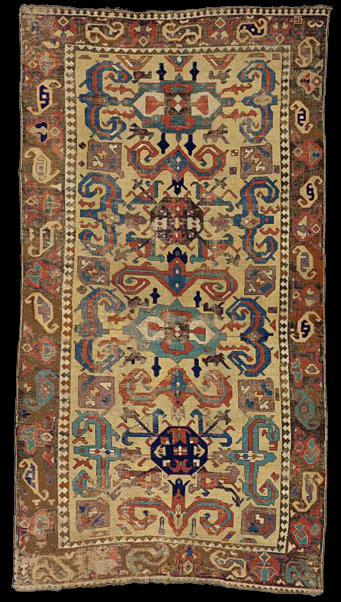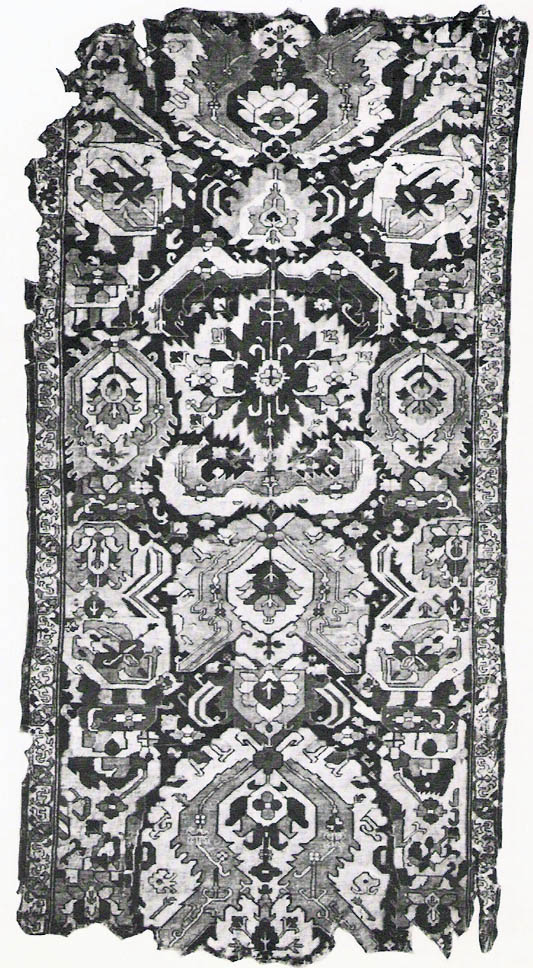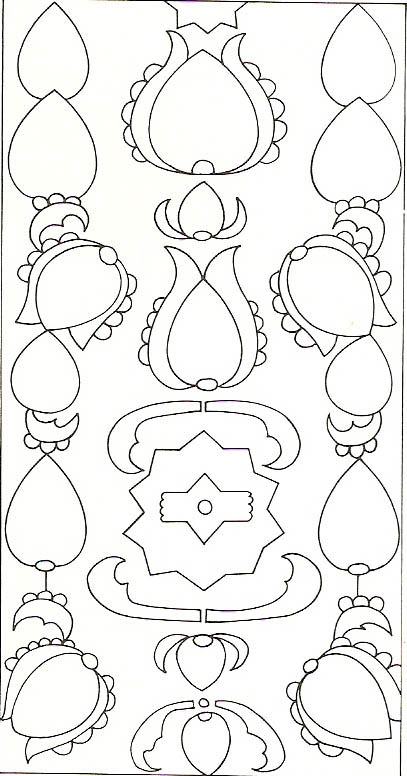 |
Carpets from
the Estate of Vojtech Blau
Sale: N08291 | Location:
New York
Auction Dates: Session 1: Thu, 14 Dec 06
LOT 86
AN EAST CAUCASIAN CARPET (Kuba Khanate)
20,000—30,000 USD
Lot Sold. Hammer Price with Buyer's Premium: 114,000 USD
MEASUREMENTS
approximately 9ft. 7in. by 5ft. 1in. (2.92 by 1.55m.)
DESCRIPTION
18th century
Condition Note: oxidized browns, missing outer side guard borders,
reselvaged, foldwear, repiling and reweaves, partial end guard borders
TECHNICAL ANALYSIS
Warp: Wool, Z2S, brown and ivory twisted
Weft: Cotton, Z2S, 2 shoots, natural ivory
Sides: Not original
Ends: Not original
Density: 8-9 horizontal, 8-9 vertical - between 112 000 & 115 000 knots
per square meter (VD)
Colors: dark blue, medium blue, light blue, madder red, aubergine, soft
yellow, chocolate brown, walnut, beige, ivory
CATALOGUE NOTE
The present lot, with its palette of ten colors and rams horn design,
belongs to the group of carpets produced in the Caucasus in the 18th and
19th centuries that are now considered as precursors to the Perpedil
weavings of the late 19th century. Perpedil carpets, named after the
northeast Caucasian [Kuba (VD)] village, usually exhibit a wide
variety of rams horn motifs along with vine arabesques, tulips, and birds.
Many of these design elements originate in the patterns of Caucasian
embroideries. For an example of such embroidery, see Burns, James D., The
Caucasus, Traditions in Weaving, Seattle, Court Street Press, 1987, plate
49. These carpets went through numerous transformations throughout the
centuries. The hallmark rams horns design itself can be considered as a
later variation of the earlier blossom design. For a transitional carpet,
where the rams horn motif is still clearly a part of the blossom design, see
Yetkin, Serare, Early Caucasian Carpets in Turkey, London, Oguz Press, 1978,
vol 1, pg. 89, plate 37. In the lot offered here, the repeat concept of
earlier weavings of the 17th century disappears with motifs standing
isolated in a single vertical row. The practice of isolating a number of
elements from a richly varied design and using them as the building blocks
of new compositions is typical of many carpets from the Caucasus. The only
repeating motifs in the field of the carpet offered here are the in- and
outward-facing pairs of rams horns that flank different decorative elements,
creating a new pattern in every row. The fields bold and free design is
contained by a floral-inspired main border. A similar Caucasian carpet is in
the collection of James D. Burns, see Burns, James D., op. cit., plate 20.
|



